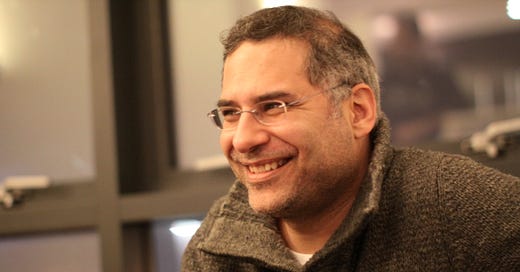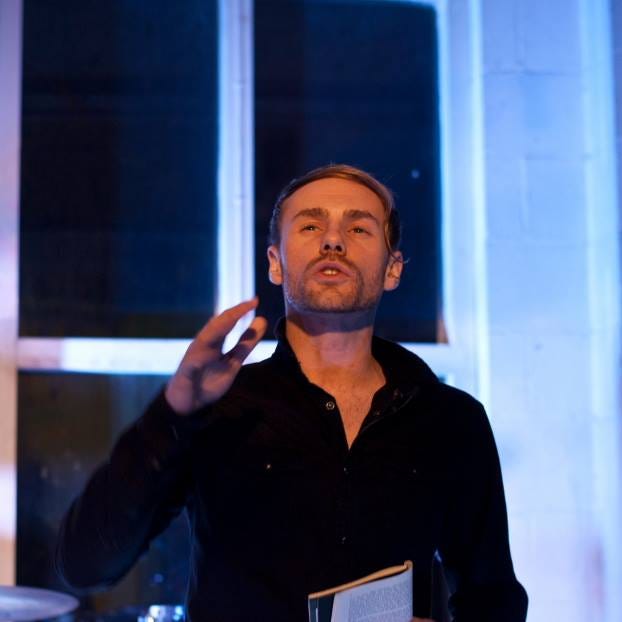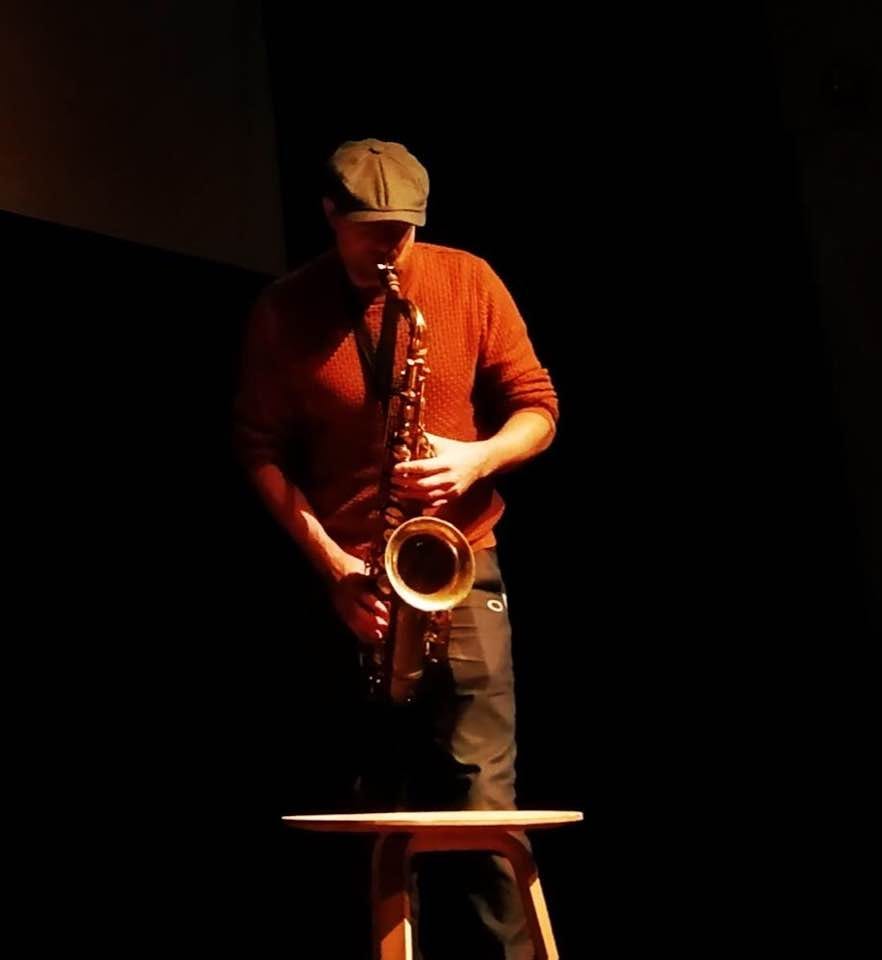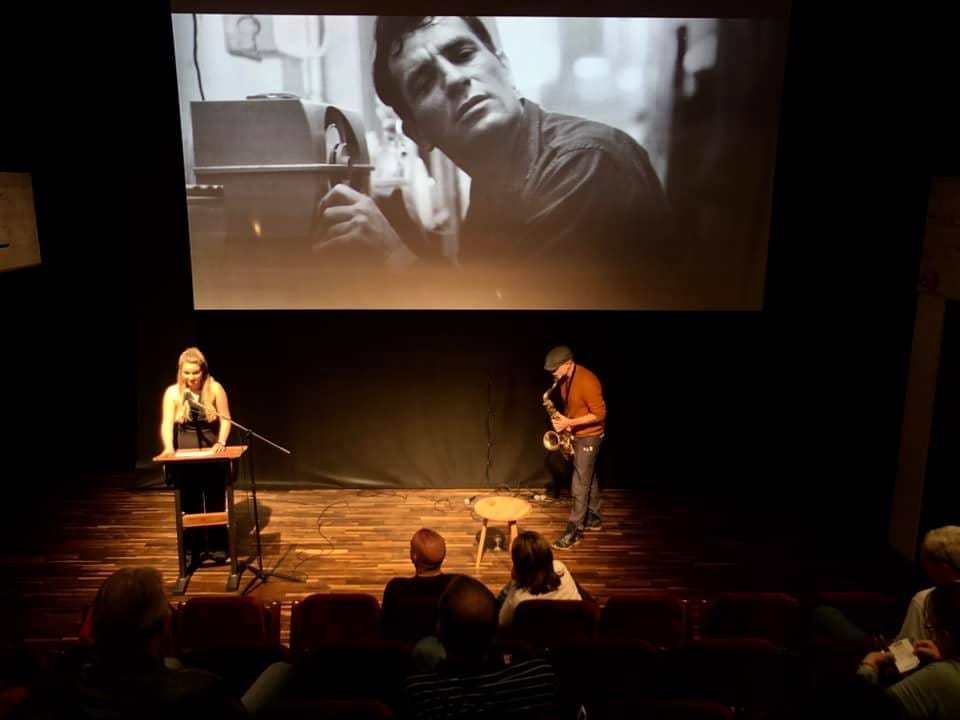By George: Unseen hand helps keep the Beat
Theatre director George Rodosthenous has been a key figure in forging four Beat celebrations in the UK, with his latest talented collaborator at the centre of a Kerouac centenary event
IN THE COUPLE of decades since the millennium carried us into a new era, a psychological moment perhaps to start again and an impetus to potential creative renewal, the Beat Generation calendar has prompted a number of live UK celebrations on my personal watch.
Yet, no such occasion is ever one individual’s vision and I’ve been delighted to find allies, associates and supporters able to contribute to, and indeed shape, these commemorative events: four in total, two dedicated to Allen Ginsberg and a pair focused on Jack Kerouac.
In 2005, I worked closely with the theatre director and drama lecturer George Rodosthenous on Howl for Now, a recognition of the 50th anniversary of the first public reading of Ginsberg’s ground-breaking epic in San Francisco.
The vast poem was delivered by George Hunt in the Clothworkers’ Centenary Concert Hall at the University of Leeds, the climax of an evening in which a number of rising young composers under the mentorship of my Music department colleague Mic Spencer presented their musical responses to the famed literary work.
Rodosthenous was back again in 2015 when he directed Hunt once more at Still Howling, a 60th anniversary show staged at the remarkable Wonder Inn, Manchester, with artist Roger Bygott my principal creative conspirator.
The occasion included poetry, spoken word and music and Ginsberg’s long-time guitarist Steven Taylor oversaw, in person, a unique choral setting of ‘Footnote to Howl’. British Beat legends Michael Horovitz and Barry Miles participated and Peter Hale of the Allen Ginsberg Project attended.
Four years later, Kerouac, 50 years gone in 2019, was remembered when I curated a film festival, Kerouac on Screen, to record this anniversary. And Rodosthenous was present once more, overseeing an inspired live presentation of the writer’s astounding verse cycle Mexico City Blues, narrated by Saskia Connolly, at Square Chapel in Halifax.
And so to the present. This month, we have been recognising the imminent centenary of Kerouac’s birth with Kerouac Lives!, a new stage production embracing new songs by Heath Common and John Hardie, the premiere of a short US film entitled American Joyride, plus readings by an emerging actor by the name of Malcolm Webb, adopting the title role in a hillside venue close to the celebrated alt-arts centre that is the Yorkshire town of Hebden Bridge.
Yet again Rodosthenous contributed, identifying Webb as a young and gifted performer capable of authentically replicating the author’s voice, providing a highly convincing representation of Kerouac’s distinctive accent and bringing some of his most famous passages, from Doctor Sax and The Town and the City, On the Road and Big Sur, to fresh life before a sellout crowd.
There have been several other overlaps at these literary celebrations over the last 15 years or so – poet Heath Common attended Howl for Now, brought his band to Still Howling, spoke at Kerouac on Screen and was MC at Kerouac Lives! Further, the brilliant free jazz saxophonist Christophe de Bézenac, once of the incredible Trio VD, was the featured accompanist to the Ginsberg and Kerouac renditions at the three previous shows.
But to that principal and consistent thread: George Rodosthenous. He has been an integral offstage present at all of these anniversary dates and I am more than pleased that he has agreed to be interrogated about his crucial, almost unseen, hand in the making of these Beat celebrations, where poetry and prose, jazz and rock, new sounds and new expressions, have been synthesised in a variety of ways.
Were you familiar with or drawn to the Beat writers, George, before we worked together on Howl for Now in 2005? If so, which texts were you aware of?
At the beginning of this journey, I was familiar only with Kerouac’s On the Road. It was through our collaboration that I discovered the work of Allen Ginsberg and the powerful emotional impact of his language. At that point, I was able to make associations with the work of earlier seminal poets such as Constantine P. Cavafy, Arthur Rimbaud and Ginsberg’s own biographical references.
I had to research also Neal Cassady’s life and his relationship with Ginsberg since in ‘Howl’ there are specific references that had to be understood within their biographical and socio-political context.
Pictured above: George Rodosthenous
In Howl for Now and Still Howling, you directed a young actor called George Hunt who performed the poem in full. How did you go about working on and inspiring that extraordinary effort: did he really – I can hardly believe it even now! – learn the whole piece? Please talk us through the method that went into that tour de force presentation.
George Hunt has the ability to provide a very direct and immediate instinctive response to the text. We worked on the visual imagery that emerges from the text and how to ensure that this imagery is communicated clearly to the audience. We studied each visual image in detail, and made associations with photographs of the period, documentaries and other research material linked to the Beat Generation – Cezanne paintings, images from readings and recordings, etc.
We allowed the language to determine which passages need to linger on for longer and which ones can be delivered at the speed of fireworks. Indeed, George knew the piece by heart by the end of the process and he was able to embody the different nuances of the text in a powerful way. His own interpretation took into account the language’s musicality and its dynamic power to transport, move and astonish the audiences in a rollercoaster of intensity and series of awakening shocks.
Pictured above: George Hunt in Still Howling Credit: John Lynch
What do you feel about ‘Howl’ now as a poem? Did working on the text so intensively affect your feeling for and understanding of the work?
Admittedly, the more you read and listen to the work, the more you get an understanding of the political messages, biographical references and links to his other works. I was able to find associations with the poems ‘Love Poem on a Theme by Whitman’ (1954), ‘Many Loves’ (1956) and ‘Please Master’ (1968) and these assisted me in understanding the overall context of ‘Howl’ in Ginsberg’s entire body of work.
The sensuality of the language and its explicit nature, at times, is an attack on the senses, but overall the political message that resides is one of restrained optimism. This led to my article ‘The Dramatic Imagery of “Howl”’ in the volume Howl for Now, in which I share my findings from this rehearsal process and highlight Ginsberg’s own search for modes of personal expression.
Christophe de Bézenac provided the saxophone accompaniment on the Howl for Now performance as he did for Still Howling 10 years later. What did you feel that quite sparse musical detail would add to the performances?
Christophe is a unique artist who has an inherent understanding of improvisation. He is able to respond in the ‘moment’ and work with or against the text to provide an additional semiotic level to the reading of the text. The underscoring that he provided was an enriching experience which helped us travel back in time, but also punctuated, elevated and highlighted moments in the text in a way which was deeply powerful and insightful. His own sensitivity and dynamism offered a combination of unparalleled beauty and sophistication.
Pictured above: Christophe de Bézenac in Mexico City Blues Credit: Krishna Francis
The leading Beat critic and historian Barry Miles said that George Hunt's performance in Manchester in 2015 was the best reading of 'Howl' he had heard outside those given by Ginsberg himself. How does that make you feel?
I was very moved with Barry Miles’ comment. His endorsement of the reading enabled me to connect even deeper with Ginsberg’s work and his legacy. The creative team felt very proud and humbled at the same time.
In 2019, you created a thrilling performance of Kerouac’s Mexico City Blues with actor Saskia Connelly and, again, Christophe. Please explain your approach once more: how did you edit the cycle of poems down and what instructions were you able to share with the voice and musician in this piece?
I was on a plane journey back from my summer holiday in Cyprus when I made the final selection. It was difficult to edit the cycle of poems down, but we had to work within a specific timescale and thus I tried to ensure that the selection had an even balance of work that flowed well into each other and provided a certain thematic unity.
Saskia has the gift to hone into the text and extract the meaning in a clear and focused way. In our rehearsals, we talked about the overall arc, the rhythms and surprises of the language. It was very refreshing to hear the text from a female voice and this offered new potentials.
And, when Christophe joined us in rehearsal, we agreed on mutual points of convergence and, in that way, the collaboration became an exercise in listening, and responding in real time to each other’s music-making: a true demonstration of authentic musicalisation in real time.
Pictured above: Saskia Connolly and Christophe de Bézenac, Mexico City Blues
One of your 2020 BA Theatre and Performance graduates Malcolm Webb has taken on the role of Kerouac in the centenary show this month. Say a little more about why you suggested him. His talent for accents is certainly notable: his performance in Kerouac Lives! was both mature and highly plausible. Have you offered him any advice as a young performer taking on the role of a celebrated literary figure?
Malcolm was one of the best performers in his year group and received the School of Performance and Cultural Industries’ ‘Best Performance Prize’ in 2020. He has a special talent in approaching the language and is able to unpick the text’s subtexts and hidden narratives.
He did extensive research on the voice patterns of Kerouac and was able to emulate the accent of the era in a remarkable manner. In our preparatory session, we focused on punctuating specific moments in the text in a way that allowed the imagery to emerge. We also discussed the energy and ambience of each extract and how it can be performed with different intentions and nuances. Malcolm was able show his dedication and understanding of Kerouac’s work in a fascinating way.
Thank you for sharing these articulate and revealing insights…
Note: Malcolm Webb, who takes the title role in Kerouac Lives!, is the subject of a profile and interview in Rock and the Beat Generation: ‘Decoding Kerouac: Webb search cracks master’s voice’, January 21st, 2022







